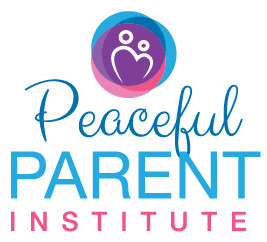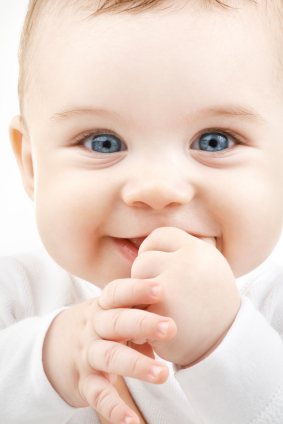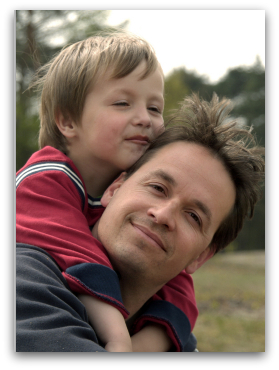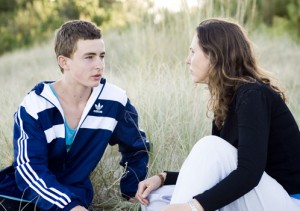Peaceful Parenting puts the focus on identifying the underlying feelings and unmet needs relating to out of balance behaviour. When we focus solely on the behaviour, we can miss the opportunity to tune in to and hence support our child on an emotional level.
This chart is a good one to print out as a quick reference to help parents or teachers tune in to the needs that may be driving certain behaviour, hence helping children regain balance and focus more easily. This approach is way more effective than using punishments or enforcing consequences.
Click here to learn more about the Peaceful Parenting Philosophy and Key Principles and tools. When the adult tunes in to and helps the child meet their underlying needs, they can begin to feel better, hence focus and behave better. This can also be useful in helping a parent to re-frame a challenging situation when the parent becomes emotionally charged and has the urge to choose actions that escalate a situation.
A: When the child’s behaviour is …
B: The child’s likely to be feeling;
C: And likely to need;
B: Insecure. Anxious. Afraid. Anger. Rage. Accused. Very frustrated. Threatened. Self-esteem very low. Lacking confidence. Vengeful. Overwhelmed. Confused. Disorientated. Sad. Lonely. Isolated. Unloved. Misunderstood. Judged as naughty & bad. Excluded. Powerless. Vulnerable. Lost.
D: Child may seem distracted and distractible. Cautious. Disorientated. Frazzled. Sensitive. Easily upset. Resistant. Frequent conflicts with other children. Clingy. Whining voice. Nervous. Demanding of attention/ sugar/ entertainment/ distractions. Small problems result in big reactions. Uncooperative.
E: One or more; Needy. Irritable. Confused. Frustrated. Stressed. Unsettled. Resistant. Unseen. Unheard. Judged. A lack of empathy. Uncomfortable emotions. Uncomfortable and squirmy in their body. Lost. Disconnected from self and others.
Child has some unmet needs.
F: For adult to slow down and give their full attention. Warm connection. Reassurance, especially relating to limits. Release stress through laughter or crying. Positive guidance & encouragement. Pressure reduced. Threats reduced. Rhythm, routine & predictability increased. Emotional validation. Guidance & information that’s easy to understand.
G: Child is focused on their play. Good at meeting their needs. Expresses clearly when seeking help. Confident. Friendly. Generous. Sociable. Seems alert. Energized but settled. Healthy curiosity. Listens well. Cooperative. Eating, sleeping and learning well.
Confident. Energized.
Child’s current needs are met.
I: Attachment figure available. Awareness of how and where to access physical and emotional needs. Rhythm & routine. Predictability. Variety. Security. Fun. Friends. Opportunities to meet challenges & practice skills. Overall happy family. Encouragement.
This chart is not intended to be diagnostic or to replace seeking professional help when needed, especially when a child’s behaviour fits with the behaviours described in the first box A most of the time. Most children will display a whole array of behaviours and perhaps some from each box in the first column most weeks, especially when they experience changes and big challenges.
But if your child’s behaviour is in the more extreme (Box A) much of the time, I would recommend you seek professional help. You can book a consultation with me to talk it all through and gain some strategies to work with and if I feel that it could be helpful to have your child accessed with a child psychologist, I will let you know. You may also wish to look into environmental factors like diet and allergens.
Many parents and teachers find that adopting this lens helps them maintain the warm connection and helps them move from the very stuck approach of trying to make a child change their ways, to beginning to explore how the child may be feeling and what they may be needing. When a parent adopts this more compassionate and creative approach, it tends to lead them down a whole new way of relating and to many factors that are contributing to the problems that they may not have otherwise seen.
Genevieve is a qualified Counsellor, a certified Level II Aware Parenting Instructor, parent educator and coach, writer and public speaker. She has been helping individuals, couples and families for twenty five years.
You might also like to read: When Peaceful Parenting Isn’t working, what’s missing?
Plus this list: “Basic Emotional Needs Checklist”
Find us on FACEBOOK









I find this somewhat misleading. The suggestion here is that if you are always perfectly meeting your child’s needs you will always have a content and perfectly well-behaved child. It also suggests the child’s whole world is in the hands of the child’s primary parent. Is it not true that children, like adults, will have experiences in life that are difficult and require them to process through a variety of feelings. In response to these feelings they will use the tools they have at hand. If they don’t have the tools of self soothing, logic, thinking things through, etc, they might engage in behaviors such as screaming/demanding/aggression. However, if they do then according to this chart this child “has a backlog of unmet needs.” My two and a half year old does not have “a backlog of unmet needs.” Nonetheless, when I brought home her newborn brother she was aggressive toward him on occasion and was sometimes demanding or screamed in the first 3-4 weeks as she adjusted to this huge change in her life.
Either this chart is wrong OR it needs more explanation. Such as “if your child is acting in this way 80% of the day THEN there might be these underlying issues.” Otherwise, I find this chart to be more harmful and damaging than it is helpful.
Thank you,
McCalla
Hi there McCalla, there are perhaps some gaps between the messages that I am hoping to give and how you have interpreted this chart. Yes I agree that it needs more explanation and most of my articles do expand these concepts for parents and teachers (who I work with equally) giving the tools and the psychology that helps people understand children’s behaviours and how to work more positively with the child.
You said; “Is it not true that children, like adults, will have experiences in life that are difficult and require them to process through a variety of feelings” – yes. They develop their self-soothing and emotional regulation skills through our ability to connect with them and give them emotional support when they experience upset. I absolutely agree with you that if they don’t have these tools, they will be unable to behave in a socially healthy way much of the time.
You said; “It also suggests the child’s whole world is in the hands of the child’s primary parent.” I’ve read back through the chart to see where this misunderstanding could have been gained and I can’t spot it. I share this chart with early childhood teachers just as much as I do with parents. I purposely started the suggestions (which is all they are) in the needs column with the word “adults” or “the adult” as I believe that these are needs and suggestions that can be helpful to teachers, caregivers and relatives as much as parents.
In relation to a backlog of unmet needs, a child or even an infant can build up a backlog of unmet needs relating to frustrations in one particular day, or week. The child who has had many small frustrations throughout the day may suddenly have a meltdown at bath time not because anything traumatic has happened, not because the parent hasn’t been doing the best possible job of meeting all the needs, but because life offers challenges and frustrations for most people most days. That’s normal and it’s okay. The problems arise when parents don’t know how to deal with the challenges that arise or don’t recognize that the child has needs in the situation, but just expects them to do as they’re told.
Child development and parenting are vast subjects, no one chart can distill all that information and give a one stop shop of parenting advice and I just have to hope and assume that this is obvious. In consideration of your feedback, I’ve added a paragraph that refers the visitor to read more of the articles on my site to start to gain a much broader understanding and more of the tools.
Yes I do believe that if a child’s needs were always met that the child would be content and their behaviour would reflect this, yet it’s not realistic or even necessary for any parent or caregiver to always meet a child’s needs. Many children will display this whole array of behaviours on most weeks or even most days. Many of the parents I work with have described that when they first sought my help, their children were displaying the behaviours described in the first box more than the others and that as they have learned to meet more of their child’s deeper emotional and psychological needs and use healthy and respectful communication skills and gentle non-punitive discipline, that the majority of behaviours have become more indicative of that described in the second box down in the first column and eventually the third box down most of the time. Yet it’s important that we accept our children and meet them where they’re at and not set an overly idealised expectation of our child or us as parent’s being perfectly behaved all the time.
This is one of the core differences between the peaceful parenting model and traditional parenting models where unrealistically high expectations are put upon children to be obedient, do what they’re told and act well regardless of what’s going on for them or in the context of the whole family. We humans feel deeply. Every family is juggling many opposing needs much of the time and it takes a lot of love, commitment and communication and problem solving skills to navigate through it all. Perhaps you’ve interpreted that I’m suggesting that parents SHOULD always meet all their children’s needs and that hence children SHOULD be well balanced most of the time. I’m working with families day in and day out and those who know me in person know me to be someone who really gets their struggles.
Genevieve
It’s frustrating when we don’t know why or how to make things better. It isn’t a backlog but instantly she is now second class. Let me try to explain so that you may have more empathy for your first born.
She was the center of the universe the sun and all of the sudden she has to be last on everything probably feeling like pluto. She doesn’t understand why mommy keeps playing with that doll. Thank you that at least you waited 2 years before next my mom didn’t, only had 1year 1month 1day not enough time for my development and I’m still angry at her for it. I used to be angry at my brother until my twenties for being born and my other sister is still subconsciously angry at him for being high a maintenance child.
My suggestions
perform mom’s love/light grows candle ceremony “making bringing home a baby easier” video http://www.youtube.com/watch?v=YJDvujaPEKY
Give her one on one mommy ALONE (no baby) time 15-30 minutes a day
Work on positive interactions with baby; 5 positive for 1 negative.
Make being near baby fun for her, not your a big sister parent by proxy tasks (adults don’t need children’s help.) Big sister thing may work for awhile but she’ll subconsciously figure it out and resent it later but won’t know why she feels used. Now if she volunteered and insists on helping that’s different.
Dr. Genevieve may have better suggestions and articles on helping siblings get along.
Do you have any of this information available in Spanish, I am a therapist who works with mostly Latino families and would love to share this information in Spanish????
Nice Article
Just want to add little info about my school:
Crayons Montessori, established in 1995 aims to provide children with a congenial environment and opportunities to learn and express their views. At Crayons, we are guided by the highly regarded and proven methods of Maria Montessori, an Italian physician and educator best known for the philosophy of education that bears her name. Our activities are designed to bring out the best in our children. Our highly qualified, Montessori-trained teachers use novel ways to encourage the tiny tots to learn through dance, actions, story-telling, singing, enacting stories using puppets etc. We believe that individual attention is essential to develop their personality.
[…] to understand the feelings and unmet needs beneath the behaviour. If one of my kids reacts to a request (like "can you please bring out the […]